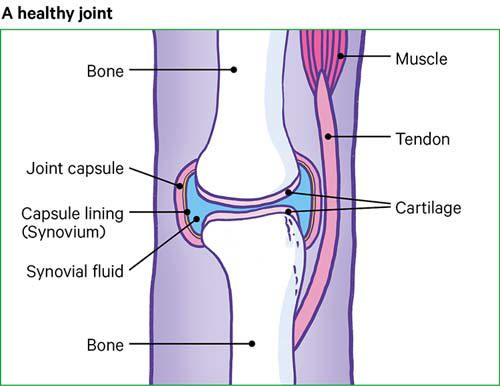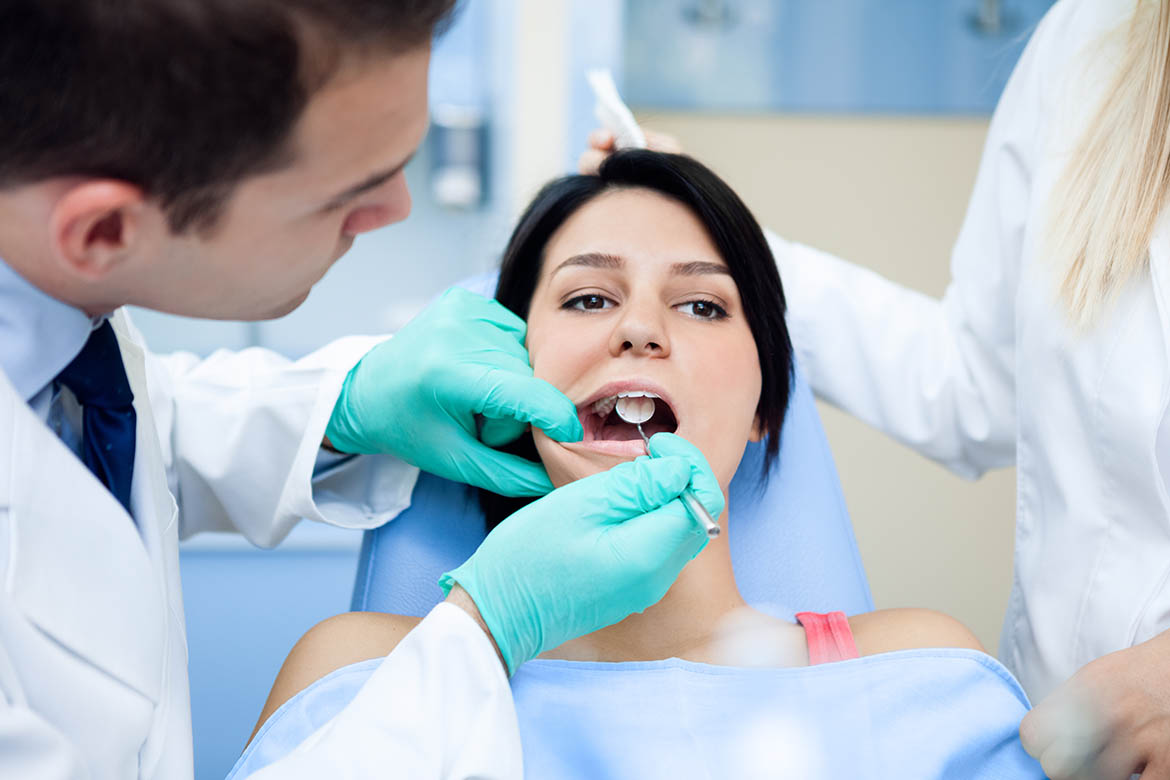Osteoarthritis (os-tee-o-arth-ri-tus) is the most common form of arthritis, and the knee is one of the most commonly affected joints.
Everyone’s joints go through a normal cycle of damage and repair during their lifetime, but sometimes the body’s process to repair our joints can cause changes in their shape or structure. When these changes happen in one or more of your joints, it’s known as osteoarthritis.
A joint is a part of the body where two or more bones meet – in your knee, it’s the thigh and shin bones. There is also a small bone at the front of the knee called the patella or kneecap.
The ends of our bones are covered in a smooth and slippery surface, known as cartilage (car-ti-lidge). This allows the bones to move against each other without friction, and protects your joint from stress.
Your knee also has two other rings of a different type of cartilage known as menisci or meniscus, which help to share weight evenly across your knee joint, and there’s also cartilage underneath your kneecap.
Osteoarthritis causes the cartilage in your knee joint to thin and the surfaces of the joint to become rougher, which means that the knee doesn’t move as smoothly as it should, and it might feel painful and stiff.
Osteoarthritis can affect anyone at any age, but it’s more common in women over 50.
Injuries or other joint problems, such as gout, can make people more likely to get osteoarthritis. The genes we inherit from our parents can also increase the risk of the condition developing.
Being overweight is also linked to osteoarthritis, as this causes extra strain on weight-bearing joints, such as your knees.
How will it affect me?
If you have osteoarthritis of the knee, you will probably feel your knee is painful and stiff at times. It may only affect one knee, especially if you’ve injured it in the past, or you could have it in both. The pain may feel worse at the end of the day, or when you move your knee, and it may improve when you rest. You might have some stiffness in the morning, but this won’t usually last more than half an hour.
The pain can be felt all around your knee, or just in a certain place such as the front and sides. It might feel worse after moving your knee in a particular way, such as going up or down stairs.
Sometimes, people have pain that wakes them up in the night. You’ll probably find that the pain varies and that you have good and bad days.
You might find you can’t move your knee as easily or as far as normal, or it might creak or crunch as you move it.
Sometimes your knee might look swollen. This can be caused by two things:
- Hard swelling: when the bone at the edge of the joint grows outwards, forming bony spurs, called osteophytes (os-tee-o-fites).
- Soft swelling: when your joint becomes inflamed and produces extra fluid, sometimes called an effusion or water on the knee.
Sometimes osteoarthritis of the knee can cause the muscles in the thighs to weaken, so your leg may look thinner. This weakness can make the joint feel unstable and could cause the knee to give way when you put weight on it.
The effects of osteoarthritis can make people feel depressed or anxious, and it can affect relationships and sleep. If you have any problems like this, mention them to your doctor as there are things they can do to help.
Are there any complications?
Osteoarthritis can develop over just a year or two, but more often it’s a slow process over many years that only causes fairly small changes in just part of the knee.
But in some cases, the cartilage can become so thin that it no longer covers the ends of the bones. This causes them to rub against each other and eventually wear away.
The loss of cartilage, the wearing of the bones, and the bony spurs can change the shape of the joint. This forces the bones out of their normal positions, making your knee feel unstable and painful.
Some people with osteoarthritis find a lump appears at the back of their knee. This is called a Baker’s cyst or popliteal cyst.
A Baker’s cyst is fluid-filled swelling at the back of the knee that happens when part of the joint lining bulges through a small tear in the joint capsule. This can then cause joint fluid to be trapped in the bulge.
It can happen on its own, but is more likely in a knee that’s already affected by arthritis. A Baker’s cyst doesn’t always cause pain, but sometimes they can burst so the fluid leaks down into your calf, causing sharp pain, swelling and redness in the calf.
Osteoarthritis in the knee might change the way you walk or carry your weight, and this could cause you to develop the condition in other joints, such as your hips



